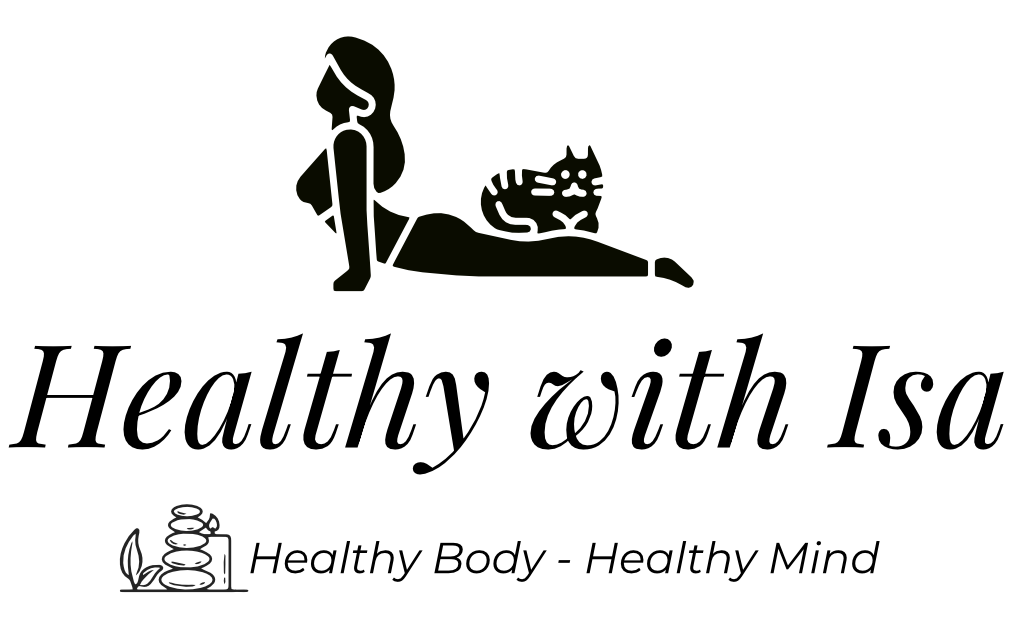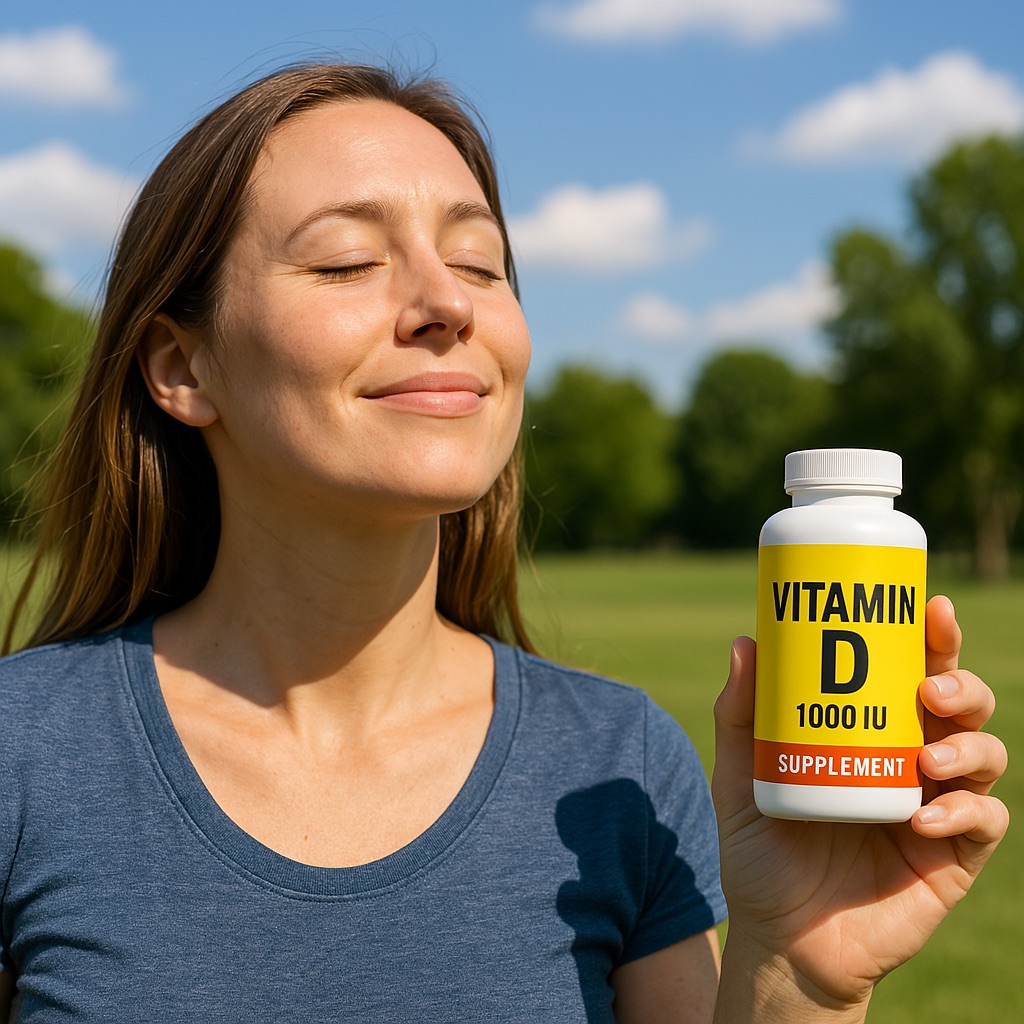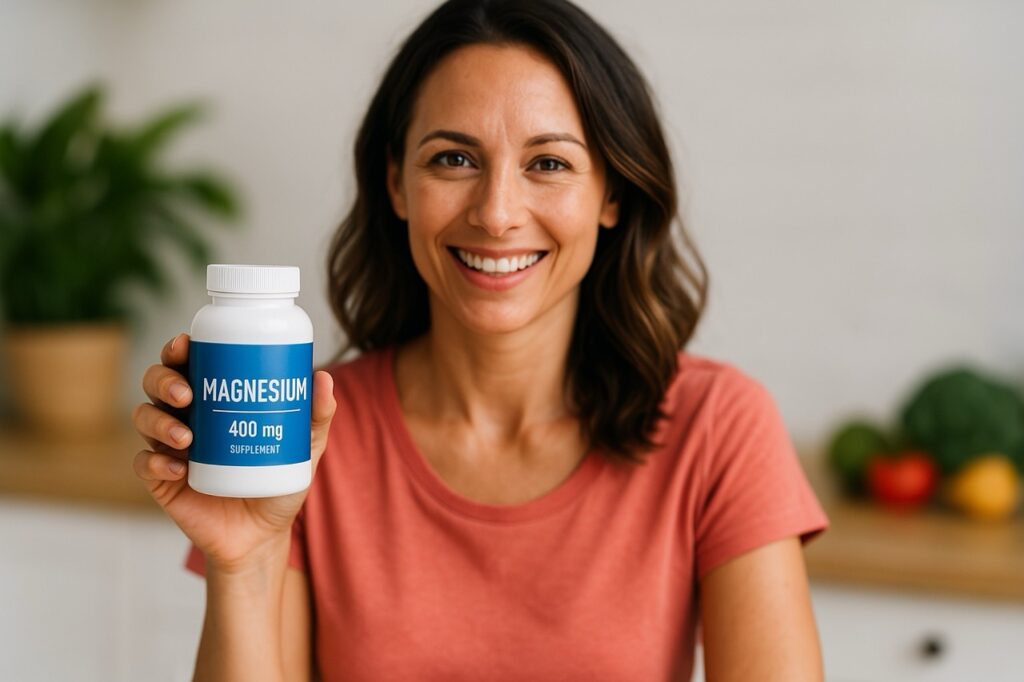Vitamin D Explained: Why You’re Probably Not Getting Enough
You eat well, try to get some sunshine, maybe even take a multivitamin—and yet, you still feel tired, unmotivated, or under the weather more often than you’d like. Sound familiar?
This is where vitamin D steps into the spotlight. Often called the “sunshine vitamin,” it’s essential for your bones, immunity, energy, and mood. But despite its importance, many women are unknowingly running low—especially during the colder months or when life gets extra busy.
In this guide, you’ll get vitamin D explained clearly and simply—what it does, why so many women are deficient, how to tell if you’re one of them, and how to choose the right supplement for your body and lifestyle.
Why Vitamin D Matters More Than You Think
Vitamin D isn’t just about bones. Yes, it helps your body absorb calcium and phosphorus—two minerals crucial for bone strength—but its role goes much deeper. It functions more like a hormone than a vitamin, affecting almost every system in your body.
Here’s what it helps with:
- Bone health – Prevents osteoporosis and fractures
- Immune support – Helps your body fight infections and viruses
- Mood balance – Supports serotonin regulation (hello, fewer mood swings!)
- Hormonal health – Especially important during perimenopause and menopause
- Muscle function – Reduces cramps and boosts recovery after exercise
Yet despite all of this, over 40% of U.S. adults are vitamin D deficient—and the numbers are even higher in women with darker skin tones or those who live in northern climates. (PubMed Study)
Why? Because we spend more time indoors, wear sunscreen (which blocks vitamin D synthesis), and rarely eat the foods that contain it in natural form.
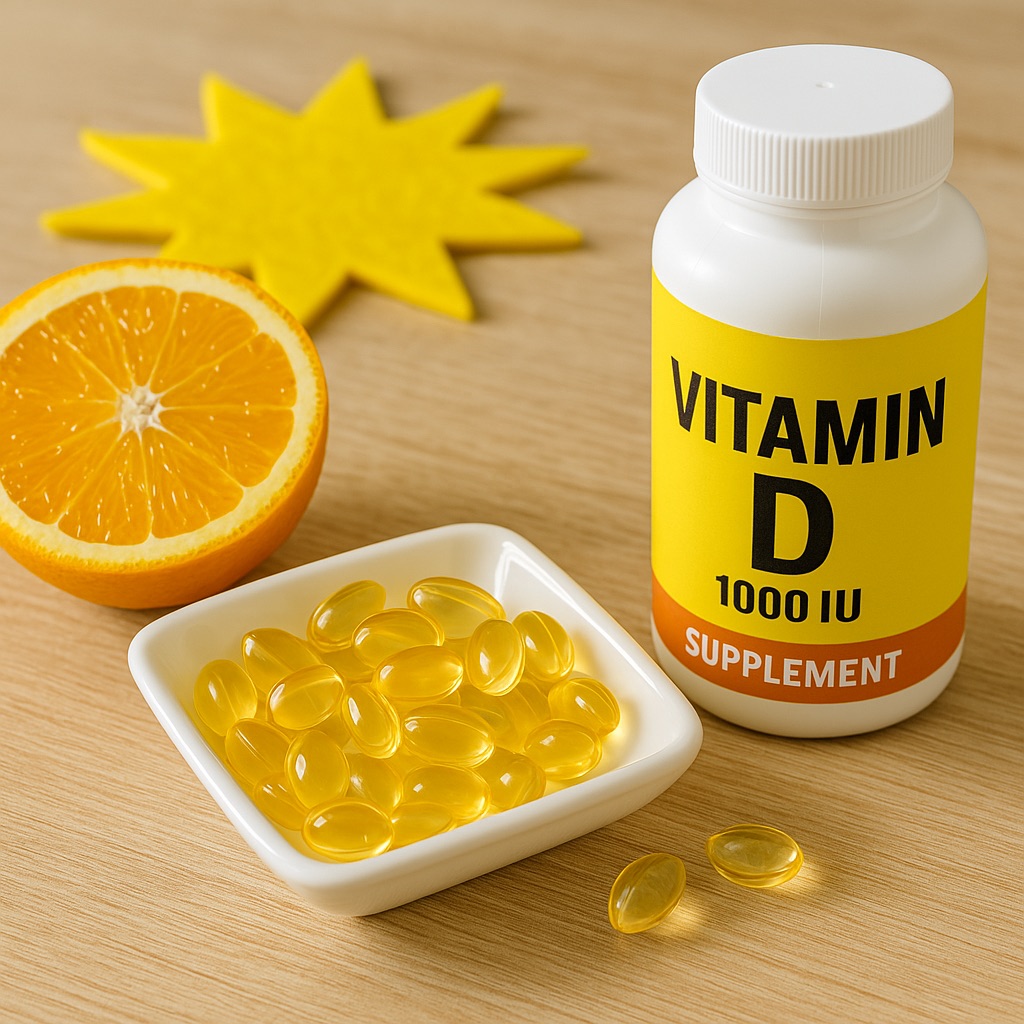
Signs You Might Be Low in Vitamin D
Vitamin D deficiency can sneak up on you with symptoms so subtle, you might mistake them for stress or just “getting older.” But when you know what to look for, the clues become clearer.
Common vitamin D deficiency symptoms include:
- Feeling tired or drained, even after a good night’s sleep
- Achy bones or muscle cramps
- Mood dips or seasonal blues
- Getting sick more often than usual
- Brain fog or forgetfulness
- Low back pain or joint stiffness
How do I know if I’m low on vitamin D?
The best way is through a simple blood test called the 25(OH)D test. You can request it during your annual physical, or even do an at-home test through services like Everlywell or LetsGetChecked.
High-risk groups include:
- Women with darker skin (melanin reduces vitamin D production from sunlight)
- Those living in colder or northern climates
- People who wear sunscreen religiously or cover their skin outdoors
- Vegans or those on restrictive diets
- Women over 50, especially post-menopause
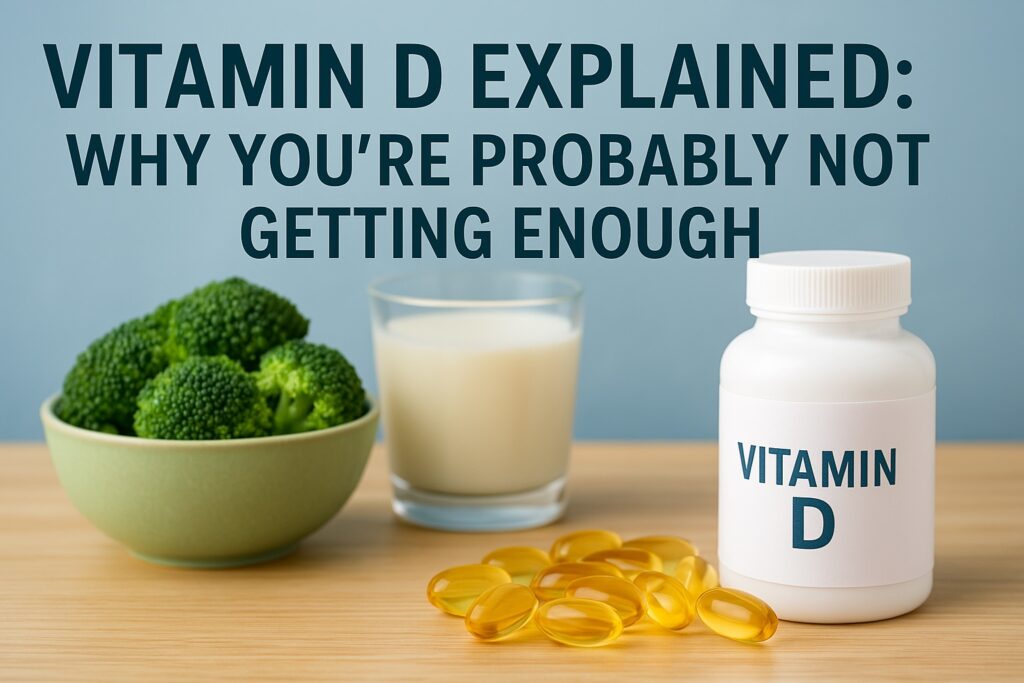
D2 vs. D3, Dosage, and How to Take It
Let’s break down the supplement aisle.
D2 vs. D3: What’s the Difference?
- Vitamin D2 (ergocalciferol): Found in plants and fortified foods.
- Vitamin D3 (cholecalciferol): Found in animal-based foods and made by your skin when exposed to sunlight.
- Why D3 is better: It’s more effective at raising and maintaining blood levels of vitamin D. (Healthline Reference)
Recommended dosage (general guidelines):
- Adults under 70: 600–1000 IU daily
- Adults over 70: 800–2000 IU
- If you’re deficient, your doctor may recommend 5,000 IU or more short-term
When to take it:
- With food—especially fat (avocado toast, eggs, or nut butter work well)
- Many experts now recommend morning or early afternoon to avoid disrupting melatonin production at night (Verywell Health)
Important tip:
Combine vitamin D3 with magnesium and vitamin K2 for better absorption and bone support.
👉 to buy it now!
Common Mistakes to Avoid with Vitamin D
Even when people supplement regularly, there are some easy-to-make mistakes that reduce its benefits.
- Mistake #1: Taking it on an empty stomach
Vitamin D is fat-soluble. Without fat, it won’t absorb properly. Always take it with a meal that includes healthy fat.
- Mistake #2: Skipping supportive nutrients
Magnesium helps activate vitamin D, while vitamin K2 helps it get to your bones instead of arteries. If you’re low in either, you might not get the full benefits.
- Mistake #3: Over-relying on sunlight
Yes, sunshine helps—but if you’re in the U.S. from October to April, you’re likely not making enough. Wearing SPF, sitting by a window, or living in northern latitudes further reduces synthesis.
- Mistake #4: Guessing your levels
Symptoms alone aren’t enough. Some women with “normal” energy still test low. A blood test gives you the real picture—and helps you supplement confidently.
A Small Habit That Can Change Everything
Vitamin D doesn’t get as much buzz as other trendy supplements, but it truly is a game-changer for energy, mood, immunity, and long-term bone health.
The best part? It’s easy to fix once you know the facts. Whether it’s a short walk in the sun, adding salmon to your lunch, or taking a morning softgel with your smoothie—tiny choices add up.
So now that you’ve had vitamin D explained, you can make smart, simple choices that help you feel your best, every single day.
You might like this other posts
- Which Magnesium Is Right for You? A Beginner’s Guide
- The Chronic Pain Survival Guide: Practical Steps for Better Days
- 7 Nutrient-Dense Foods Your Body Is Craving
Outbound Sources
